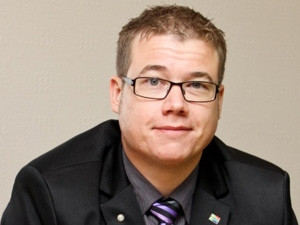
There is a lot of confusion in the South African market regarding the differing approaches to ICT system protection and recovery, in particular server replication.
So said Bradley Janse van Rensburg, solution design manager at ContinuitySA, in an interview with ITWeb.
"We have a framework for ICT continuity that we use to assist clients in selecting the best approach to protection and recovery methods for their ICT systems. These are divided into four main categories - high availability, replication, backup and archiving. The best way to select your approach is to plan around the timeframe of a potential disruption or loss of an IT service," he explained.
According to Janse van Rensburg, replication approaches create a consistent copy of a system or service at a particular point in time in order to recover rapidly from a loss, which is the main benefit of server replication.
"With regular replication copies being created and synchronised offsite, your recovery environment can be kept extremely close to the state of your production environment. Server replication also makes testing far quicker, cheaper and easier, which allows organisations to test more often with more consistent results."
Growing interest
Janse van Rensburg says there is a lot of interest from South African organisations to invest in server replication, with the biggest driver being the need to match the quick recovery times required by businesses in the modern marketplace.
Infrastructure shift from physical to virtual is significantly affecting organisations, and this has resulted in organisations also seeking to replicate their servers, he said.
"Data explosion, as well as growth in the availability and affordability of bandwidth, is another big driver, especially in SA - there were solutions that were historically not viable due to the cost of high-speed, low-latency bandwidth.
"As always, cost is a major component of any new IT initiative, and CIOs and IT managers often have to accomplish more, with more stringent service levels, with budgets continuously under pressure. It's important to compare the cost of recovery solutions to the potential cost of the business impact [in the event of system failure]. Such impact includes financial and regulatory loss, damage to reputation, or the productivity costs of people not being able to work."
According to Janse van Rensburg, SA faces dire IT skills shortages, but with server replication and experienced managed services providers, organisations will be able to free up those rare resources in order to focus on improvement and innovation in their core businesses.
He also emphasised that one of the biggest costs facing IT departments, which is often not clearly reported on, is failed IT projects. "About 80% of IT projects do not finish on time, or within budget, and don't deliver the business objectives originally required. So increasing your success rate with IT projects is a huge way of getting better use for money."
Challenges
The biggest challenge organisations face regarding server replication is selecting appropriate technology and competent suppliers who can provide holistic solutions for virtual and physical environments as well as older legacy systems, which are often still deemed business-critical, Janse van Rensburg said.
"Identifying a suitable location to replicate the servers to is another challenge. There are many great colocation data centres across the country but the questions organisations usually ask are: 'Are the correct resources available and is it connected to an environment that is easy to recover to? Is it connected to a work area that staff can seamlessly relocate to and that voice services can be redirected to? Is it connected to your extended data network?'"
Thus, he noted, the holistic business continuity environment is usually difficult to find.
However, South African businesses tend to believe they are immune to disasters. He therefore stresses that it's important to appreciate that businesses are more than just the physical building.
"Your business is the processes that you perform to create value for your clients; the value that you create is represented by profit and the information that you use to drive those processes. All of this is more flexible, portable and resilient than the buildings you operate out of.
"SA doesn't have the natural disasters that you will find in the United States, for example, but we have our own challenges. These include the dependability of infrastructure, power, water, roads etc."
Strikes and denial-of-access are also common problems among South African organisations; even events like fire and flooding can affect anyone, he concluded.
Share